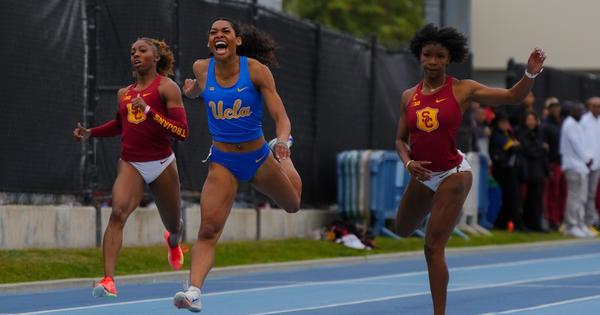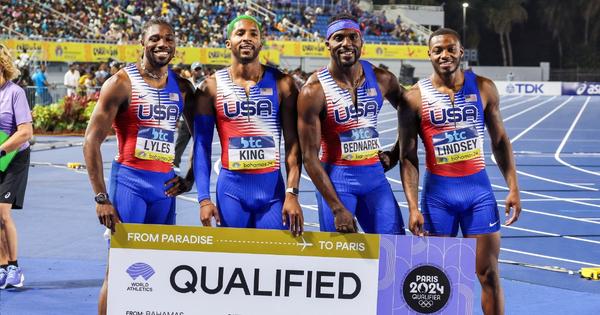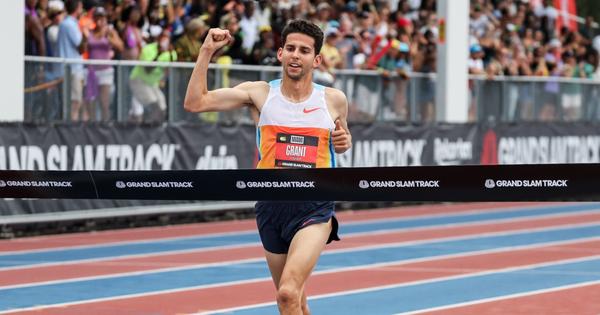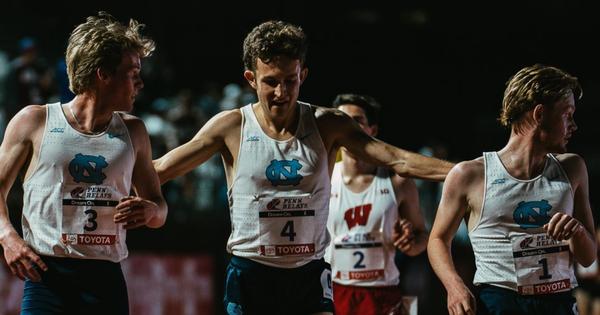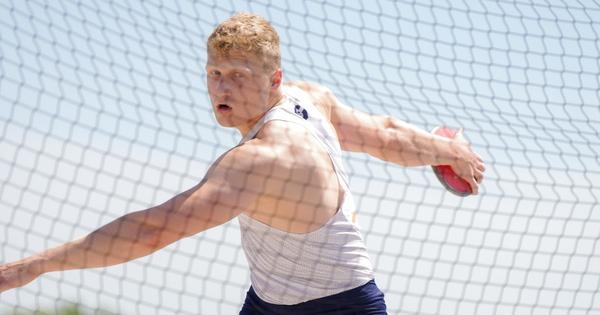By Audrey Allen
May 7, 2025
Two years ago, Lap Count Founding Father Kyle Merber asked if we should care about dual meets. CITIUS MAG’s Audrey Allen, a distance runner for UCLA, remembers that day well:
It was the last time the UCLA vs. USC rivalry meet was at Drake Stadium. The men’s 4x400m got DQ’d for “unsportsmanlike conduct,” and you can probably spot me crutching around if you look hard enough at the video. I wish that hobbled Audrey knew that two years later she’d be writing for this newsletter and part of the Bruins squad that just upset the then-No. 1 men’s team and No. 3 women’s team in the country.
As fun as pulling out the brooms and chanting “We Run LA” as we took our victory lap was, I’m clear-eyed enough to point out that we probably won’t score higher than USC at NCAAs. Yesterday’s USTFCCCA rankings didn’t budge much for either Trojan squad, and nor should they have.
So how’d we pull it off?
It all boils down to this: a dual meet is a true test of strength across the breadth of two entire teams, whereas success at nationals can be fueled by excellence in a few concentrated areas. This begs the question: what qualifies as a better track team? The one that’s saturated with world class talent in a handful of event groups, or the one that’s got more range across the board?
It was the first sweep for UCLA at this meet since 2013, and the first win for the women’s team since then, too. Joanna Hayes has contested the meet 14 times—she was an UCLA athlete, an assistant coach at both UCLA and USC, and now is her first year as director back at her alma mater. To say last Sunday was special is an understatement. The men’s competition came down to one point, decided by an athlete in his second meet back from injury, in the second to last competition of the day, on his final jump. My roommate threw in not one, not two, not three, but four events. Horizontal jumpers scored points in the pole vault. The meet wasn’t about the marks, yet we had our share of school records and personal bests. A close dual meet can bring out the best in an athlete, and highlight the best in our sport.
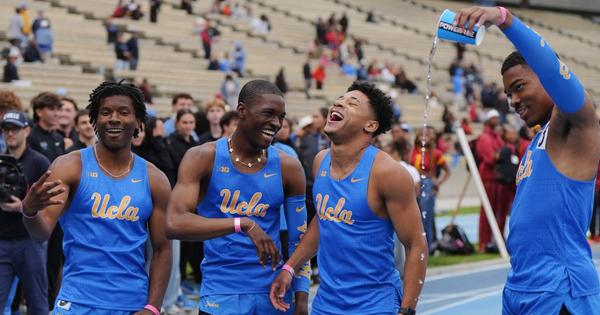
Photo by Audrey Allen / @audreyallen17
So why does the dual meet experience seem to disappear when most track and field athletes receive their high school diploma?
UCLA and USC have the Dual Meet (91 years and counting), Cal and Stanford have the Big Meet (130 years old)… and I’m a sucker for the rule of threes, but I’m not sure if the traditional Harvard-Yale-Princeton tri-meet counts for this example.
The people love Penn Relays because it spoon-feeds fans an easily digestible product of rallying for or against teams, and it gives athletes who might otherwise not compete in a baton-focused event the opportunity to experience the competitive high of one. As much as I hated the unparalleled lactic sensation, a part of me loved it when my high school coach told me my eight-lap run in the 3200m was actually a warm up for 4x400m. People like Graham Blanks stay for an extra NCAA cross country season because there’s not a comparable team-oriented experience in the professional ranks. Grand Slam Track is exciting because the Racers vs. Challengers format creates tension. Track and field is most popular at the Olympics because people take pride in rooting for their country.
From an entertainment perspective, the dual meet is a simpler format to digest and that’s a good thing. You’re either wearing blue or red. There’s only one heat or there’s only one flight. Crunching the numbers to see how the team scores are shaping up becomes increasingly straightforward.
From an athlete perspective, more of them actually have the ability to contribute to this team score. There’s a clearly-defined common enemy. You don’t feel so much like a collection of individuals competing against other collections of individuals. Team scores matter for conference championships, but outside of that track and field sometimes loses sight of the team aspect, especially if you’re not one in the spotlight as a consistent NCAA title contender. But if you’re a team that only has a rental car at nationals and not a bus or two, it’s a different story.
A common theme of this newsletter and big-picture track and field conversations in general is to do away with the marks-oriented focus the sport has fallen into. Obsessive focus on stats and records takes away from the competitive nature and flare inherent to the stripped down, back-to-the-basics version of beating the person, or the team, next to you.
Two meets this weekend drove that argument home—you probably watched one over the course of three days on Peacock, and you might just be hearing about the other as you read this. But at their core, only the specifics really differ. Repeat competitors can feel like old rivalries. $100K paydays or victory laps on your home track can both be life-changing. Fast times, big throws and far jumps are collateral. Just ask Masai Russell. Or Naomi Johnson.
So what’s my call to action here? We should bring the dual meet back to the NCAA. Think: “The World’s Largest Outdoor Cocktail Party” but make it track and field. “The Iron Bowl” but it's actually the Iron Oval. “The Holy War” but it’s a battle between the distance powerhouses at BYU and Utah, at altitude (enough said).
To answer Kyle’s two-year-old question, the dual meet model has many benefits beyond the dramatics of a good rivalry. More teams should take advantage of it. It’s fun. It’s prideful. It’s competitive. It's historic. It’s an apt kickoff to the postseason. It’s track and field at its core. And it’s now the defining moment of my time at this program.
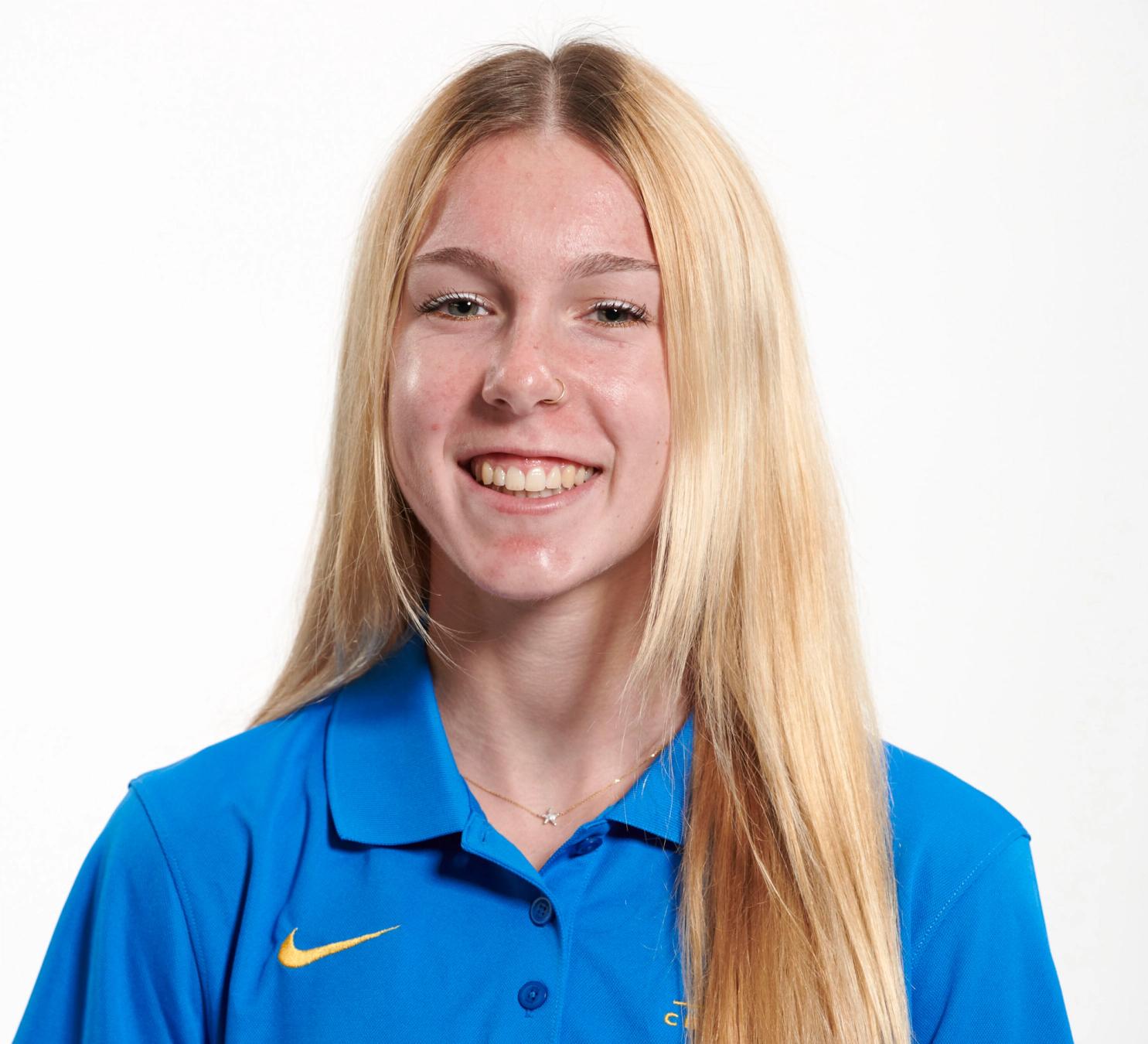
Audrey Allen
Audrey is a student-athlete at UCLA (Go Bruins!) studying Communications with minors in Professional Writing and Entrepreneurship. When she’s not spiking up for cross country and track, she loves being involved with the media side of the sport. You’ll often find her taking photos from the sidelines or designing graphics on her laptop.
